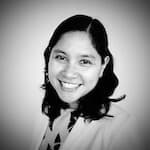Finding the right job is not just about a paycheck. The purpose behind the work you do and the company you work for are just as important. So much so that if you’re not inspired, you’ll probably speak with your feet: In one survey of millennials, 59 percent said that they would leave a job within two years if they didn’t feel like their employer was giving back to the local community (and 74 percent said they’d up and leave within five years).
That’s why it can be so meaningful when a company starts from wanting to make the world better. Take mapping technology company Esri: As a global leader in geographic information systems (GIS), location intelligence, and spatial analytics, Esri helps build maps that address the world’s biggest challenges—from speeding up disaster response (think after hurricanes or earthquakes) to designing more resilient communities and protecting biodiverse environments (like forests or coastal habitats).
Here’s how the company’s mission and products allow its employees to make a real impact in the world.
Making a Difference Globally and Locally
Imagine working to connect users to technology that helps reduce poverty, fight climate change, support gender equality, even literally promote world peace. It’s not an exaggeration to say that’s what Adam Pfister gets to do every day.
As a solution engineer on Esri’s nonprofit and global organizations team, Pfister is supporting the United Nations in their efforts around the Sustainable Development Goals, or SDGs. The SDGs include zero hunger, quality education, affordable and clean energy—and 14 more calls to action for a better future.
Esri is partnering with the United Nations Statistics Division to create data hubs and other products that will help UN member states measure, monitor, and report on their progress toward the SDGs. Based on Esri’s mapping and analytics platform (called ArcGIS), the SDG hubs will enable countries to collect, analyze, and share their SDG data.
“We get to advise on how GIS can help in each one of these goals,” Pfister says. “From keeping the oceans clean to reducing hunger and poverty, it’s inspiring to see how the GIS community is rallying around these important topics.”
But it’s not just about global projects. Esri also works directly with small conservation agencies and local non-profits. “Sometimes, a simple map of locations can have a massive impact,” Pfister says. “We can help make data visible. That means we can tell people about trends in their community, or propose solutions based on those changes over time.”
Perhaps most inspiring is the stories data can tell: “We can help turn a spreadsheet of information into a journey of discovery that can compel someone to act by signing up or donating to a cause,” Pfister says.
Helping Users Create Positive Change
Esri’s maps put the Rohingya refugee crisis in perspective, and its location intelligence technology assists in disabling landmines in countries such as Angola, Laos, and Zimbabwe. The company’s spatial analysis technology helped identify the best location for a micro-hospital in an underserved area of San Antonio, while its GIS technology helped Anchorage, Alaska tackle homelessness.
“That’s what is so powerful about where Esri’s software is headed and the incredible pace of change we’re seeing in technology.” Pfister says. “If we can make GIS more accessible and easier to communicate, positive change can happen much faster.”
Mapping a Meaningful Career
For its 4,400 employees, Esri provides a path to building a career while being part of something that matters. “The ability to grow and learn is available and encouraged at all levels,” Pfister says. “After re-evaluating what I wanted to do with my career, Esri allowed me to change my focus from commercial to nonprofit. I actually had no idea that Esri had a dedicated team that focused on these users and it was, and still is, an honor to play a small part in that.”
Pfister often supports users who are working in extreme environments, including conflict zones, providing aid to those most in need. “Staying in contact with them can be a challenge,” Pfister says, citing not just time differences, but power outages and other obstacles. “But it’s well worth it when I can see the impact they’re having with using GIS. Our users are heroes.”

